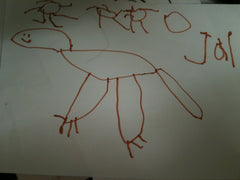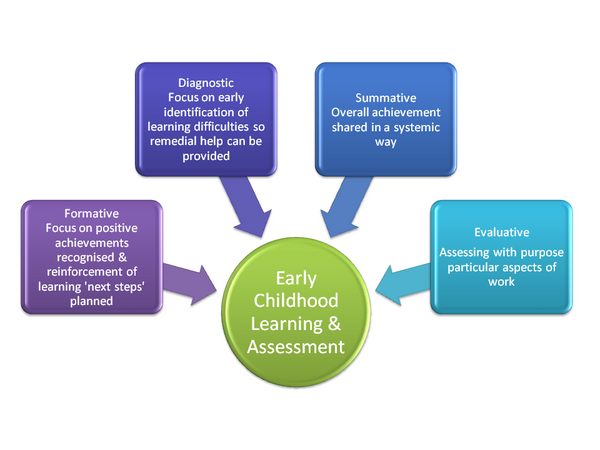Learning Through Routines
- EYLF Principle 1. Secure, Respectful and Reciprocal Relationships
- EYLF Principle 2. Partnerships
- EYLF Practice 1. Holistic Approaches
- EYLF Practice 2. Learning through Play
- EYLF Practice 3. Intentional Teaching
- EYLF Practice 5. Learning Environments
- EYLF Practice 7. Continuity of Learning & Transitions
- Linked to all five EYLF learning outcomes
What is a routine?
“A routine can be thought of as any procedure, process, or pattern of action that is used repeatedly to manage and facilitate the accomplishment of specific goals or tasks” - (Visible Thinking, n.d)
Importance of Routines
Uncertainty and change is innately stressful for all human beings (Cooperative Extension Service, 1989). Routines are important to everybody, but they are especially for young children as it allows children to navigate the continuous challenge of learning new things from the safe and comforting boundaries that are created by routines. Gan Discovery (2002) outlines the importance of routines/patterns as emotional regulators to decrease stress, anxiety and conflict. Gil (2010) extends on this further and outlines how routines help integrate learning with an ‘organized connection’.

Routines are also effective in managing negative behaviour particularly when it comes to dealing with transitions into new tasks. Routines allow children to emotionally prepare for changes that are to come. For example, a child will know that certain things happen as he gets ready for bed and as he progresses through the routine, he will also know what is expected of him when the task is completed.
Some of the important skills children learn through routines include: self control, positive behaviour and social skills. Routines can even help strengthen the relationship between you and your child as power struggles are significantly reduced (Zero to Three, n.d.).
Learning Through Routines
Routines provide a two pronged approach to fostering learning:
1. they provide learning within the routine itself and the specific tasks associated with the routine;
2. through the process of generalization (i.e., establishing a frame of reference that can be used to learn other skills and concepts (Gil, 2010).
Routines provide a context for learning to take place. Routines help children learn how their world is organized and what they need to do in order to interact successfully in that world (Sussmen, 2011). For example, after they wake up they need to get dressed and have breakfast before getting ready to go to daycare. At daycare, they need to hang up their jacket, say good morning to the teacher and then they will have time for some free play for a while before they may later sit down together as a group. Routines will give each child a sense of continuity throughout the day as well as letting them know what to expect next. Within routines children also learn methods associated with math and sequencing: used to follow an ordered sequence of activities, determine relationships between elements, count, and make simple calculations
Routines not only help children learn about their day, they can also help develop motor skills as they begin to practice the tasks involved with the routine. A child’s confidence level will also begin to increase as they become more and more successful at performing those tasks. Children may initially not be able to get dressed by themselves but they will slowly develop the skills necessary and will soon be able to accomplish the task on their own.
Getting parents involved not only in passing on key routines from home, but also sharing in key routines for your early childhood service, will strengthen the security and comfort children take from routines.
Routines can also provide opportunities for little children to slowly increase their responsibility and care of self and it is important that families and educators work patiently together to strengthen children’s confidence to do this.
Social skills can also be taught through routines such as welcoming, saying goodbye, turn taking and group times. Gill (2010) refer to this as ‘tactile and/ or visual modeling’: used when learning a new action in the routine or repeating an action that has not yet been mastered. By teaching children what behaviours are appropriate and at what times, it can teach them how to start conversations and interact with other people (Sussmen, 2011). Routines can give educators and parents a chance to practice conversations with their child as well as providing an opportunity for the child to initiate conversation. Children can inform educators and parents when it’s time for a routine to take place as well as what comes next in the routine.
Routines also teach children specific skills involved in the routine as well as skills that can be used in other circumstances (Rodriguez-Gil, 2010). For example, a routine that is learned in a pre-school will be brought home and practiced there. If the expectation at the pre-school is that children arrive and immediately put their school bag away, this routine can be imported into the family home so that children will put their school bag away when they get home as well.
Routines can also have a powerful effect on language learning because of all the opportunities they provide excellent prompts for discussion. As educators and parents progress through the various daily routines, they can name the items that are being used in the routine, they can discuss each action as it is being done and they can discuss what comes next. Their child will begin to understand the vocabulary that is associated with the routine. Gill (2010) refers to this as ‘adapted communication’: used by the child and the communication partner as needed in the routine to anticipate, to name, to make choices and to have a conversation about actions, people, objects, places, physical sensations and emotions.
Making Routines effective
In order for routines to be a practical source for learning you need to make sure that you have enough time to take each task within the routine slowly and you need to be sure that you discuss each individual task with your child (Linden, 2000). You need to try and do the same thing the same way each time you do a routine and you should also try to use the same language to help reinforce language learning. Take time out to write your routines down and discuss them which your colleagues, children and their families (Linden 2000).
You shouldn’t think of routines as tasks that need to be performed but instead as opportunities to interact in a meaningful way with your child. By talking, touching and interacting in other ways with your child, you can actually use daily routines to help develop and strengthen the bond with your child as well as providing the opportunity to learn a number of different skills.
Think of ways you can continue or leverage learning from a routine. Here are some examples:
- implement written literacy elements into a routine, by including words to label/describe routines, children can use the predictive understanding of their routines to learn new words;
- use routine and maintenance times as opportunities to explore conversation and interaction with children such as during nappy change and meal times.
- discuss routines with children and ask them how their routines could be changed, extended or improved;
- look for opportunities to extend or challenge children in the routine, such as ways to take on more responsibility or complete more difficult tasks.
- Look for new routine opportunities which children and educators can use on a daily basis to explore, discuss question and investigate (Here is a link to some amazing classroom ideas for doing this).
Authors: Natalie Higgins and David Gregory
About Raise Learning
This article has been written by Raise Learning, providers of LIFT (Learning Involving Families & Teachers - an online programming and documentation tool) and other early childhood management tools. If you would like to know more about Raise Learning or LIFT please visit our home page.
References:
Cooperative Extension Service (1989) Michigan State University ”Stress and Change” Extension bulletin E-2201, Home Economics Program retrieved 19/03/2012 from Stress and Change
Gan Discovery (2002) “Child Care Routines - The Value and Importance” retrived 19/03/2012 from Child Care Routines
Linden, J., 200, Good Habits – Learning Through Routines, viewed March 14, 2012, from Good Habits Learning Through Routines
Rodriguez-Gil, G., 2010. Routine-Based Learning, reSources, vol. 15 no. 2, viewed March 14, 2012, Routine Based Learning
Sussmen, F., 2011, The Power of Using Everyday Routines to Promote Young Children's Language and Social Skills. The Hanen Centre, viewed March 14, 2012, The Power of Using Everyday Routines to Promote Young Children's Language and Social Skills
Visible Thinking (no date) "Thinking Routines" retrieved 19 March 2012 from Thinking Routines
Zero to Three, n.d., Love, Learning and Routines, viewed March 14, 2012, Love Learning and Routines










